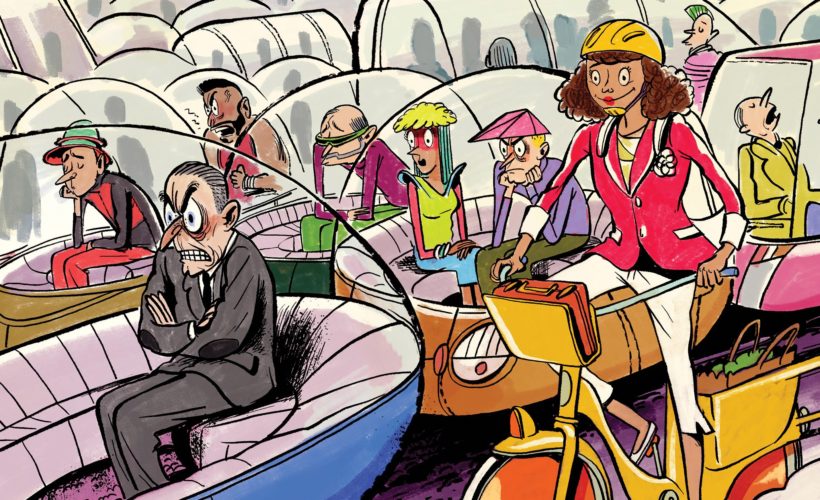What’s the shiniest, most exciting new technology for transportation? Well, there are plenty of candidates! We’ve got the self-driving car and drones big enough to carry people. Elon Musk is getting ready to bore hyperloop tunnels. When it comes to moving humans around, the future looks to be merging with sci-fi.
But from where I stand, the most exciting form of transportation technology is more than 100 years old—and it’s probably sitting in your garage. It’s the bicycle. The future of transportation has two thin wheels and handlebars.
Modern tech has transformed the humble two-wheeler, making the bike-share model possible: You check out a bike from a docking station, use it for an hour or so, then return to any other docking station. The concept was tried back in the ’60s but failed miserably because no one could track where the bikes went.
Today, that’s been solved with smartphone-ized tech: GPS, Bluetooth, RFID, and mobile-payment systems. And bike sharing has unlocked a ton of American interest in navigating cities on a bike: Usage has grown from 320,000 rides in 2010 to 28 million in 2016. In China, where gridlock in cities like Beijing is infamous, the trend has grown even faster.
But cooler tricks are possible. We’re now seeing dockless bike sharing, where all the tech is crammed into each bike, eliminating the need for docking stations. When riders are done, they just park and lock the bike and walk away; the bike simply awaits the next user. This makes the systems cheaper (those docks cost a lot), so dockless bikes can be rented for as little as a buck an hour.
“It’s personal mobility for the last mile,” as Euwyn Poon, cofounder of dockless bike-sharing firm Spin, says.
Dockless also creates something like self-governing internet logic, with bikes as packets routed where they’re needed, rather than where docks will fit. This seems to make bike sharing more fair: Seattle city councilmember Mike O’Brien has observed anecdotally that dockless bike sharing is used by a broader demographic, in part because it’s super cheap and the bikes can circulate outside the well-off downtown neighborhoods.
Want even more inventiveness and innovation? Behold the next phase arriving in a few years: dockless electric bikes. Batteries are cheaper and lighter than ever. One US firm, Jump Bikes, has custom-designed dockless ebikes sprinkled around San Francisco and Washington, DC. CEO Ryan Rzepecki suspects they’ll eclipse the appeal of regular bike sharing, because you could arrive at work without being drenched in sweat. “The number of people who are willing to ride electric bikes is probably 10X that of people who are willing to ride a regular one,” he says.
Clearly the bike-share revolution has limits. It probably won’t work outside urban areas. And if too many bikes flood a city, dockless systems can produce chaotic piles of bikes on certain sidewalks and streets, as has happened in China. This is a pretty solvable problem, though, if cities decide to limit the number of dockless bikes.
So sure, bring on the self-driving cars. Dig those hyperloops! But for a world that’s rapidly urbanizing and heating, the truly cool tech is bikes. And bike sharing has oodles of civic benefits too, says Elliot Fishman, director of Australia’s Institute for Sensible Transport: It relieves pressure on public transit, produces vanishingly small emissions compared to cars, and, at least with nonelectric bikes, boosts the overall exercise level (duh!).
Best of all, the bike-tech revolution reminds us that innovation isn’t always about the totally new. It’s often just as powerful to blend a robust, old tool that works well with a bit of new tech to make it better. Sometimes you truly don’t need to reinvent the wheel.
This article appears in the May issue. Subscribe now.
Source:WIRED











